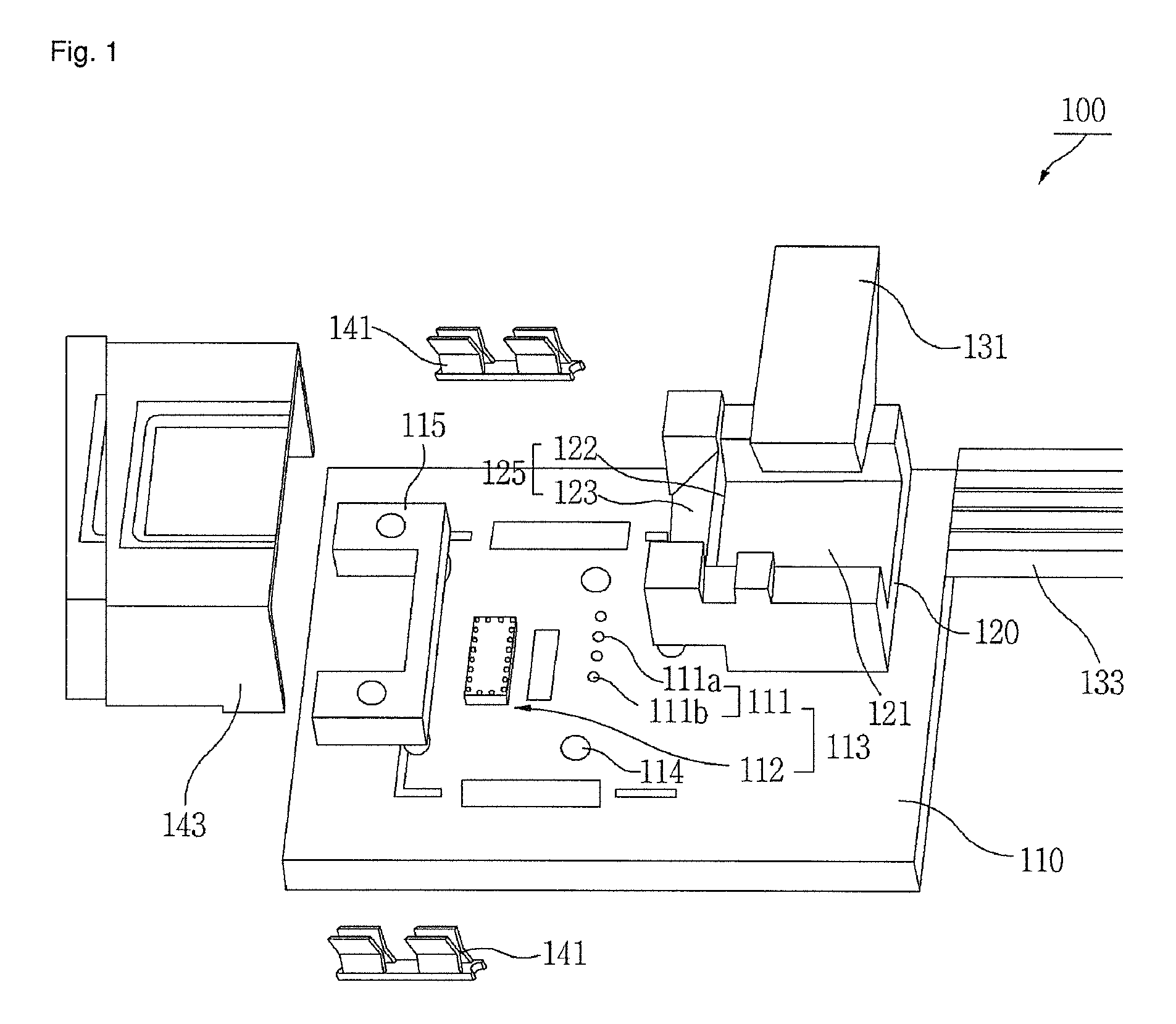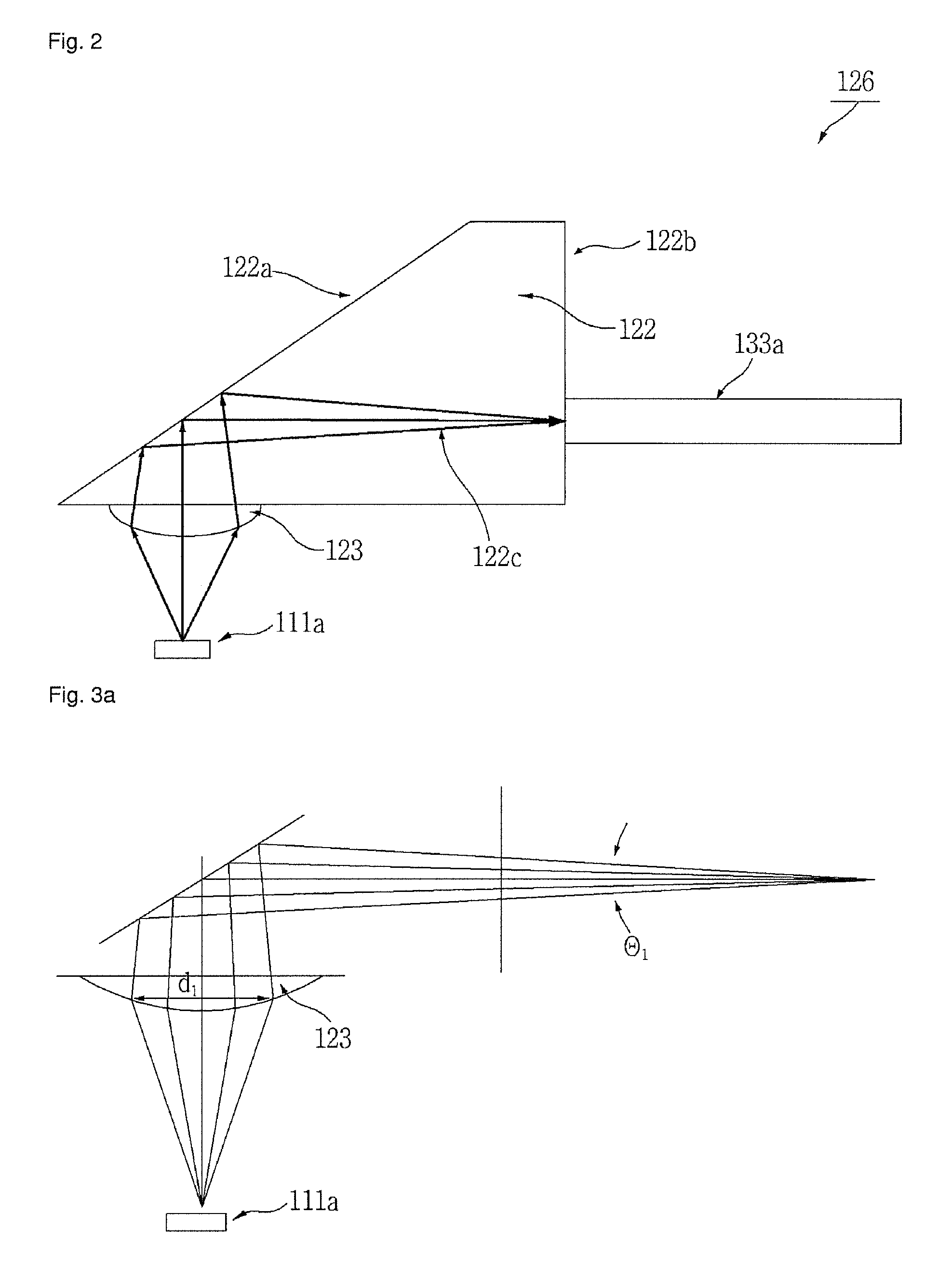Optical transmission and receiving device for implementing passive alignment of components and method for passively aligning components
a technology of optical transmission and receiving device and passive alignment, which is applied in the direction of optical elements, instruments, manufacturing tools, etc., can solve the problems of time-consuming manufacturing process, difficult use of optical alignment device, and inability to achieve passive alignment, so as to reduce the structure of optical modules, simplify passive optical alignment, and minimize alignment errors
- Summary
- Abstract
- Description
- Claims
- Application Information
AI Technical Summary
Benefits of technology
Problems solved by technology
Method used
Image
Examples
Embodiment Construction
[0051]Specific embodiments of the present invention are described below with reference to the accompanying drawings.
[0052]FIG. 1 illustrates the constitution of an optical device according to the present invention.
[0053]Referring to FIG. 1, an optical device 100 of the present invention includes a substrate 110, an optical element part 111 that includes light-emitting elements 111a and light-receiving elements 111b, a driver circuit 112, a photoelectric converter part 113 that includes the optical element part and the driver circuit 112, substrate holes 114, an alignment reference part 115 arranged on the substrate 110 for passively aligning the optical element part 111 and the lens-optical fiber connection part 120, a lens-optical fiber connection part 120 for collecting light, altering the optical path, and securing and aligning the optical fiber 133, an optical fiber pin 131 connected to one end of the lens-optical fiber connection part 120, an optical fiber 133 for implementing ...
PUM
| Property | Measurement | Unit |
|---|---|---|
| transparent | aaaaa | aaaaa |
| refractive index | aaaaa | aaaaa |
| density | aaaaa | aaaaa |
Abstract
Description
Claims
Application Information
 Login to View More
Login to View More - R&D
- Intellectual Property
- Life Sciences
- Materials
- Tech Scout
- Unparalleled Data Quality
- Higher Quality Content
- 60% Fewer Hallucinations
Browse by: Latest US Patents, China's latest patents, Technical Efficacy Thesaurus, Application Domain, Technology Topic, Popular Technical Reports.
© 2025 PatSnap. All rights reserved.Legal|Privacy policy|Modern Slavery Act Transparency Statement|Sitemap|About US| Contact US: help@patsnap.com



